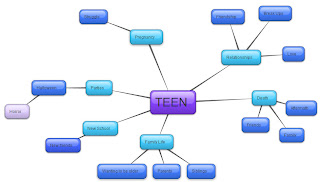‘American Teen’ is on the mocu-documentary borderline. Whether it is real or not, we don’t know. Nanette Burstein is the film maker; she followed around 5 teenagers in their final year at high school. There are many very realistic things about the film, but there is a lot that you question. A lot you wonder if it has been set up or not. Was Megan told to vandalise someone’s house? Megan is the popular, bitchy, goody two shoes that has never been sent to the principal’s office before. So why has she now? There is also her best friend, the jock. Who is the good looking, popular guy who all girls fancy yet he falls for Hannah, the rebel who doesn’t care what other people think and doesn’t have many friends. He then breaks up with her over text, something that we as an audience all question as to be a set up. Next you have the nerd, but this stereotype is challenged. In fact all stereotypes are challenged. The nerd has every quality that the stereo typical nerd would have but he isn’t an a* student and he doesn’t sit at home working all day. Hannah rebels because she lives alone with her grandparents because her mother is mentally ill and can’t look after her. Megan finds it hard to connect with emotions as her sister died when she was younger, so she takes out her anger on other people. Colin is the basketball player, who has to do well this season and get a scholarship to college or else he won’t be able to afford it. His father is an Elvis impersonator, at the local restaurant and says he has to join the army if he doesn’t get in to college.
The voiceover throughout the mocu-documentary is done by the characters, but mainly Hannah. This helps the audience feel closer and more emotionally attached to the characters. This is because they can tell you how you feel and it makes it more real. We meet all the characters family and they are filmed in their homes, there bedrooms, in their cars. Everywhere they go the cameras go. We don’t miss one bit out of their final year at high school.
The cameras used are handheld which is an important aspect of a documentary. All the scenes come across to be real yet you question a few of them, this makes you question whether it is a documentary or a mocu-documentary. They used interviews and close up, deep chats with the characters to let the audience understand the stereotypes inner feelings. We never hear or see the documentary maker, it is completely focused on the characters and how they feel, not how they are questioned or talked to.
This is an image of Megan, the princess sitting in her room.
This is an image of Mitch, the jock.
This is an image of Hannah, the rebel.
This is an image of Jake, the school nerd, during band practice.























